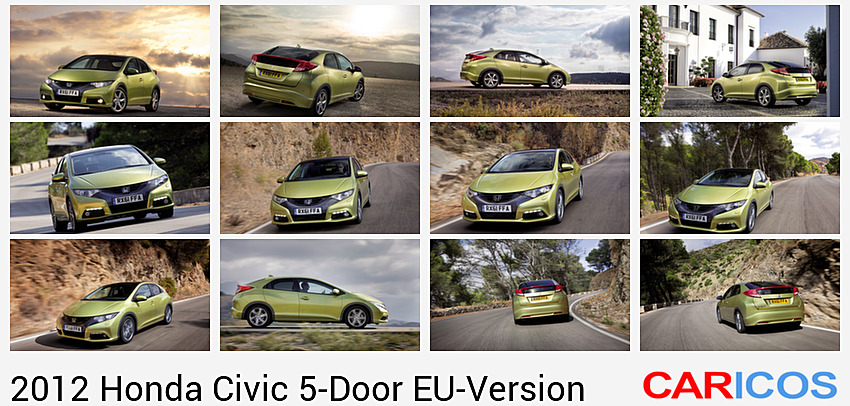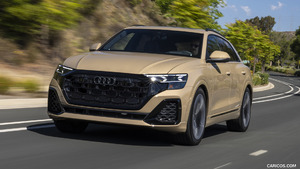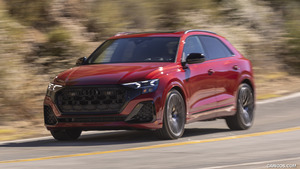Honda Civic 5-Door EU-Version
The Civic team led by Mitsuru Kariya, the ‘Large Project Leader’, were given the task to create and develop the new Civic. With the current Civic being known for its unique exterior styling and interior practicality within the C segment in Europe, Mitsuru Kariya and his team were keen to further understand the needs and desires of the European customers. The current Civic became the benchmark focus for their research to create a car that was even better.
"… when evaluating the requirements of our customers, we recognised that the European customer desires are demanding and unique in many aspects. We have focussed our development on fulfilling these expectations and through this process we have taken our development standards even further to a new level." (Mitsuru Kariya, Large Project Leader)
With the current increase of fuel prices across Europe and the environmental targets set to achieve low emissions, it was concluded from the European customer survey that the current Civic customer not only considers modern styling and performance to be important but also advanced technologies to create a Civic that was even more cost efficient to run and eco-friendly.
The development period for the new Civic spanned over four years. Nearly all of components are new to the Civic or have been further developed with areas of focus on the suspension set-up to improve the ride and handling, the interior materials to improve the overall interior quality, the new design styling and aerodynamics for a refreshed image and improved efficiency, and the engines for improved performance and reduced CO₂ emissions.
Overall the new Civic builds on the core strengths of its predecessor and takes them to an appreciably higher level. It also is one of the sector’s best in performance against low CO₂ emissions – the diesel model produces just 110g/km with 150 PS and 350 Nm of torque.
MAIN CHANGES AT A GLANCE
Interior styling
- New functional cockpit layout (two control interface zones)
- Full-colour i-MID TFT screen incorporating an Eco driving support function, audio display and user support
- Premium sound system with superior 20cm 90W subwoofers and 25mm AL dome tweeters (optional)
- New touch point surface materials used throughout for an improved quality feel
- New designed steering wheel with easy operating controls finished in extra-smooth leather with more comfortable stitching (depending on grade)
- Blue interior door lining illumination (depending on grade)
Exterior styling
- Lower and wider aerodynamic monoform profile
- Elegant look seamlessly unifying all surfaces including the wheel arches and the body
- Lower and wider unique look in the front area
- Wide aero management rear combination lamp
- New brake and indicator light cluster design
- New body colours
Exterior styling
- Lower and wider aerodynamic monoform profile
- Elegant look seamlessly unifying all surfaces including the wheel arches and the body
- Lower and wider unique look in the front area
- Wide aero management rear combination lamp
- New brake and indicator light cluster design
- New body colours
Comfort and convenience
- Air chamber support seat with lumbar and side support
- Audio key-off timer and station list
- Large, smooth-operating electric sunshade with central opening
- HDD navigation system with arrow display, 11 languages and an 800x480mm WVGA screen (depending on grade)
- Power windows operated by key fob
- Coupling to keyless button function allows the door mirrors to be folded and retracted
- Hill start assist
- Multiple storage console, including USB/iPod® and AUX inputs
- Revised interior and exterior door handles
- Smoother gear shift feel
Fuel economy and environmental performance
- ECO Assist
- Idle Stop
- ACG multi-stage control
- Reduced engine friction
- Optimised combustion
- Air shutter grille on diesel model
Safety
- LED day time running lights for improved conspicuity
- Cap-less fuelling system with misfuelling guard for diesel models
- Auto high-beam support system (grade depending)
- Distinctive, high-mounted brake light
- ACC (Adaptive Cruise Control), CMBS (Collision Mitigation Brake System - grade depending)
- Variable speed limiter
- Hands-free array microphone (grade depending)
- Lowered rear extra window for better view from the driver's seat
- Improved crosswind stability
Suspension
- Fluid-filled compliance bushings for superior damping in the rear suspension
- H-Beam Trailing Arm with even higher rigidity than the predecessor Civic Type R for road stability
Engine
- 2.2-litre i-DTEC diesel producing 110g/km of CO2 with 150 PS and 350 Nm of torque.
- 1.8-litre i-VTEC petrol producing 137g/km of CO2 with 142 PS at 6500 rpm and 174 Nm of torque at 4300 rpm
- 1.4-litre i-VTEC petrol producing 129g/km of CO2 with 100 PS and 127 Nm of torque at 4800 rpm
Background and Research
The current Civic originally launched in 2006 saw a change in the type of layout approach with the development of a unique platform based on a "centre tank" layout designed to offer practical benefits such as large cabin space meeting the needs of Europe's "C" category customers. The Civic was designed and developed for the European market receiving positive feedback in areas such as design and versatility/practicality which have helped define the current Civic as having ‘road presence' with its ‘futuristic looks;' and having a ‘multi-purpose' function with the large boot space and multiple seat arrangements offered by the ‘magic seats'.
As research commenced, the development team for the new Civic team considered these key milestones achieved with the current Civic and opted to maintain and even look to enhance the current Civic model qualities. The team wanted to create a new emotional design with the ability to surprise and provide the unexpected in terms of roominess and other practical features whilst also improving the visibility and widening the field of vision to enhance the overall ownership experience.
The current Civic had already achieved superior interior space with matching trunk capacity among its competitors. Focus now was on maintaining this class leading interior space whilst improving the overall packaging and space efficiency.
This would lead to a new exterior design, improved aerodynamic performance, reducing weight that play a role in raising the car's overall performance envelope.
Focused research was conducted to determine the latest and most important requirements for the European market. European and Japanese designers and engineers worked closely together throughout the development process. Testing was carried out first in Japan and then repeatedly in Europe to ensure suitability for the world's most demanding C-segment customers.
"the car had to be safe and easy to handle, affordable and so on ... premium in terms of having a good balance of affordable performance." (Mitsuru Kariya, Large Project Leader)
The Civic development team turned to drivers, dealers and the media to evaluate the existing Civic and define the essential ‘must keep' features and qualities, as well as the priorities for the new model. Drivers appreciated the distinct styling and form of the car, with its futuristic looks and practicality. However their feedback suggested that the car's rear design could be more sophisticated and that rear view could be improved. Inside the Civic the modern and user-friendly cockpit design was well received, as were the spacious cabin and versatile ‘magic seats', but users demanded an improvement in the quality of the materials used. Drivers were impressed with the driving experience, but noted that suspension noise could be reduced and ride comfort increased.
Research revealed that the typical Civic driver is attracted to unique, fresh design with sporty performance and advanced technologies. The environment was defined as a high priority, with customers demanding high fuel economy and low emissions.






















